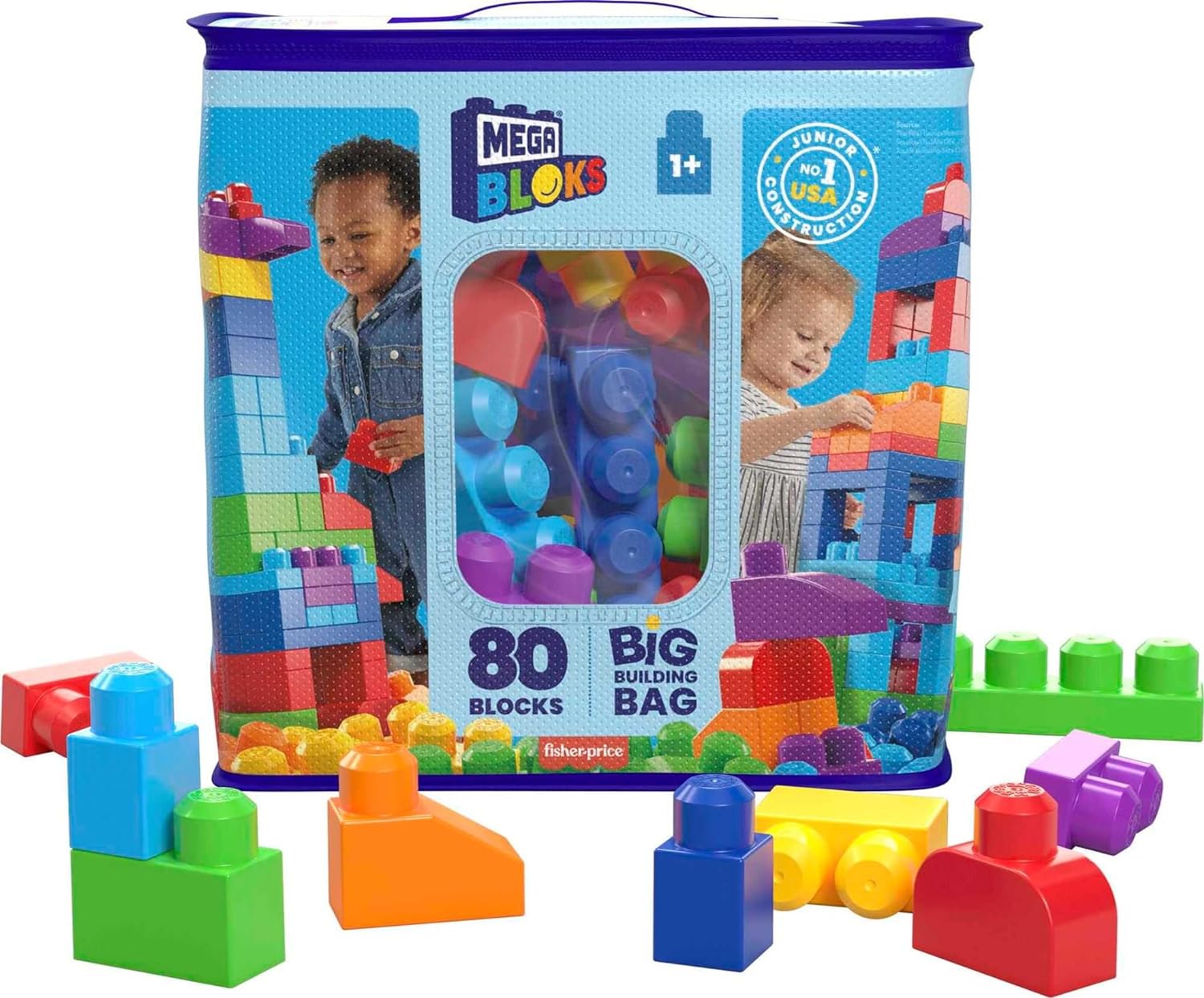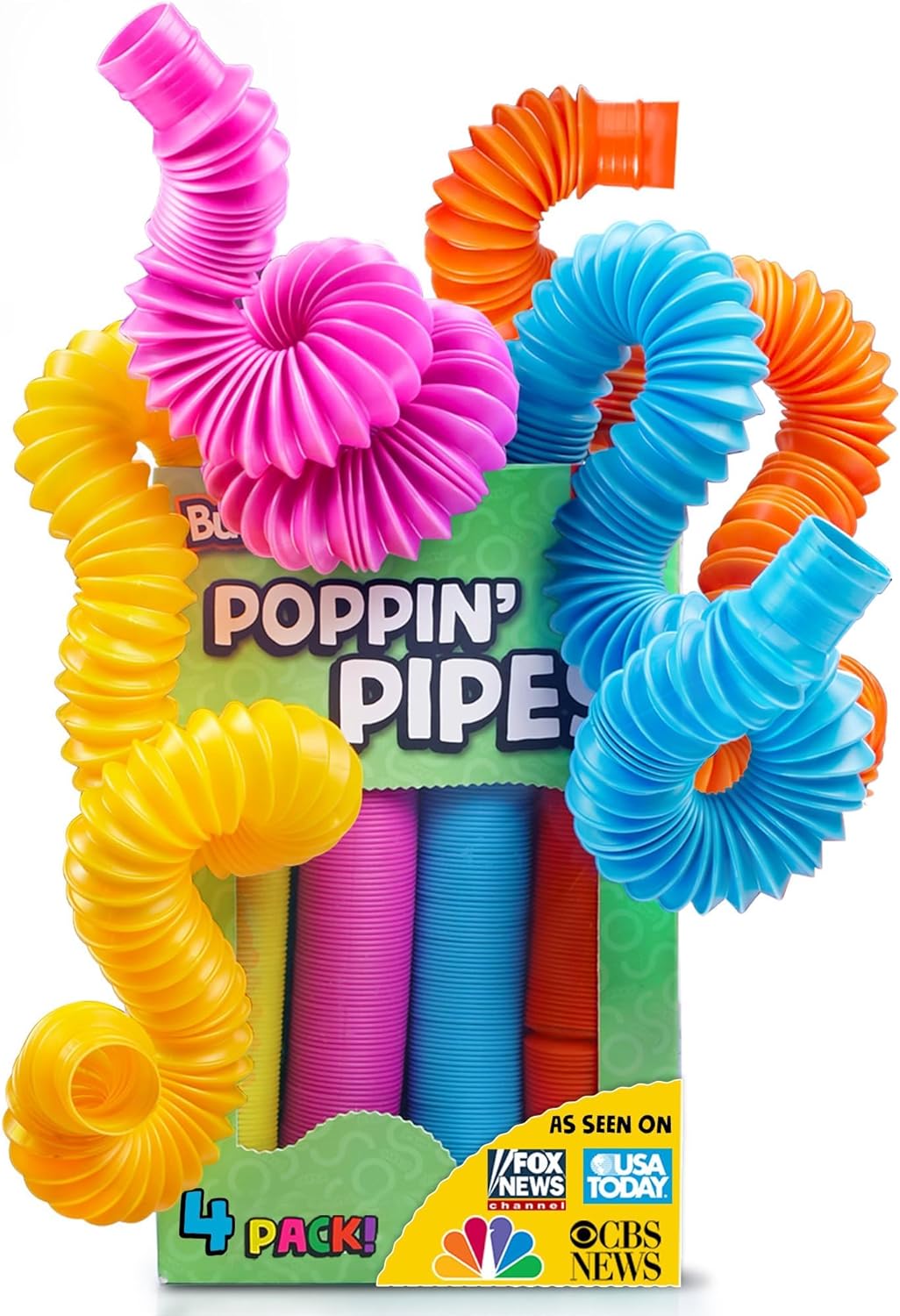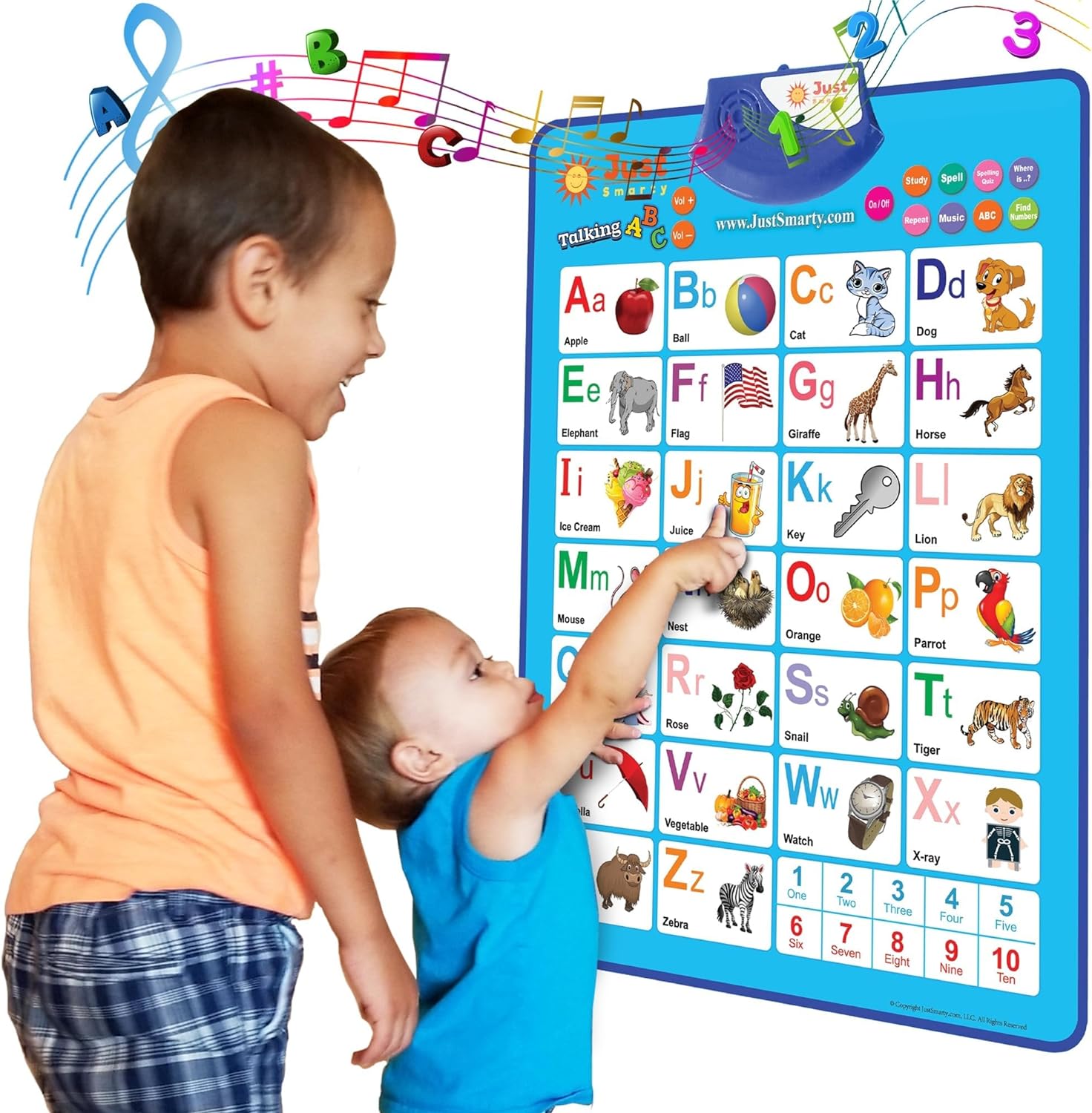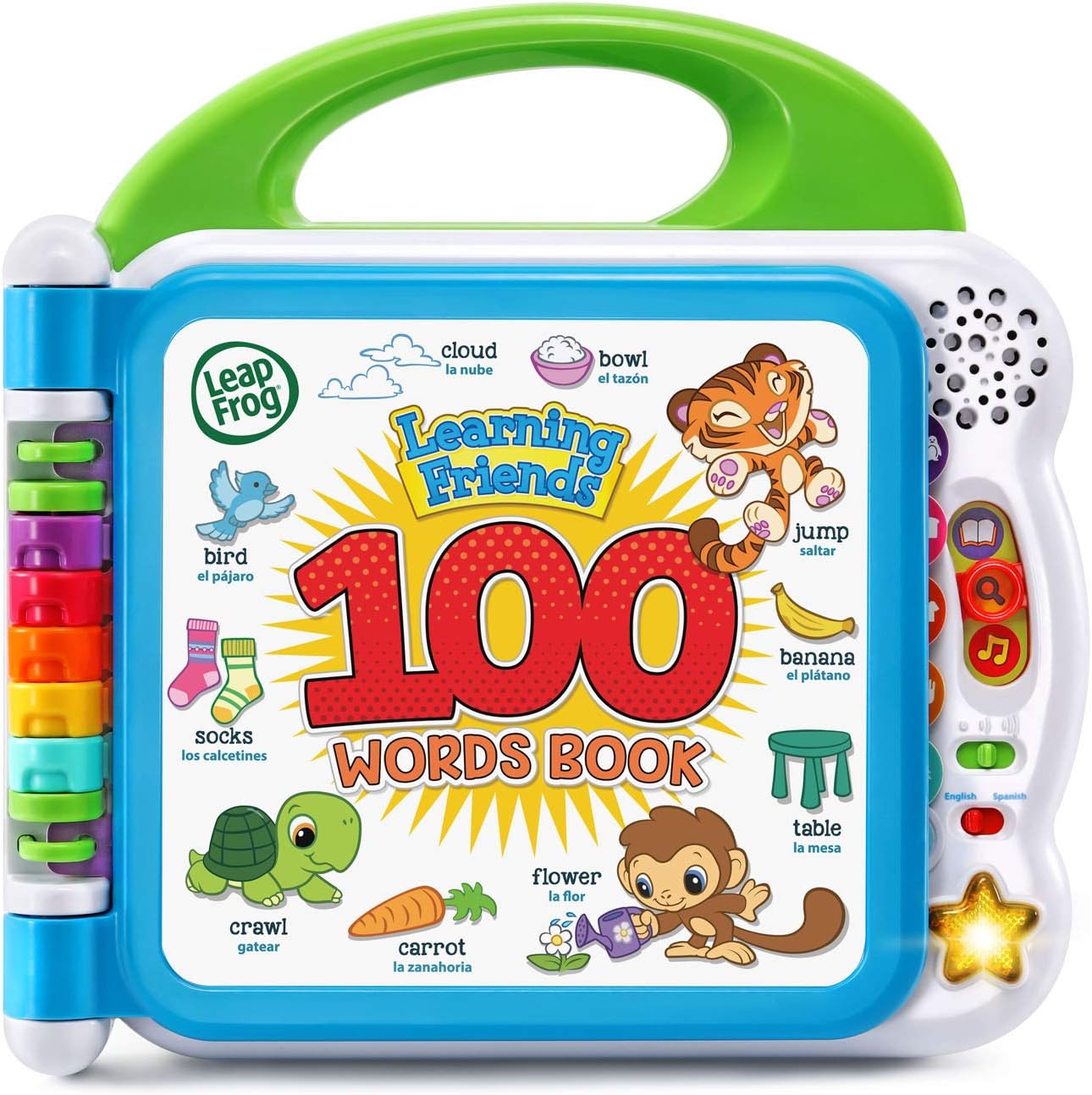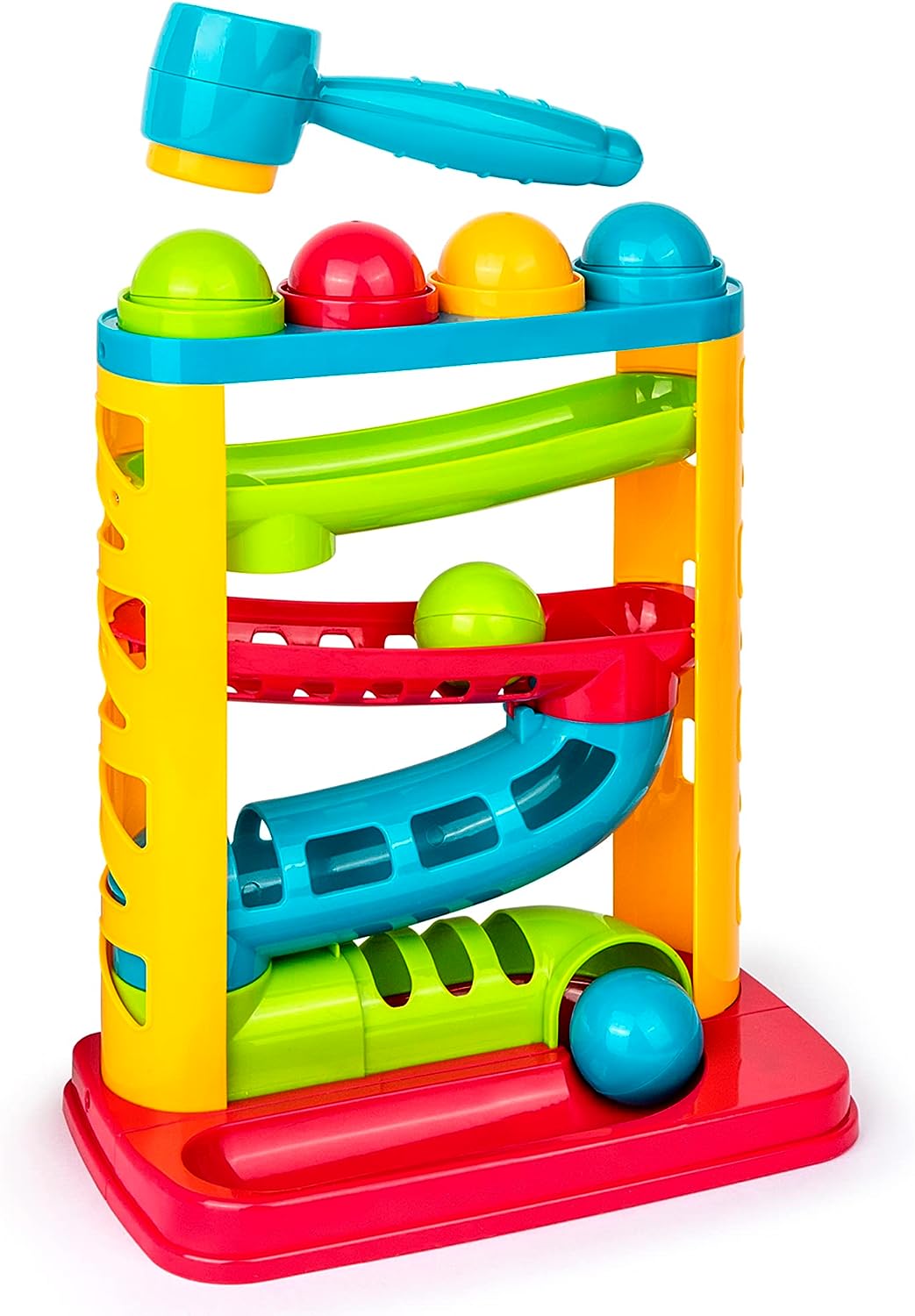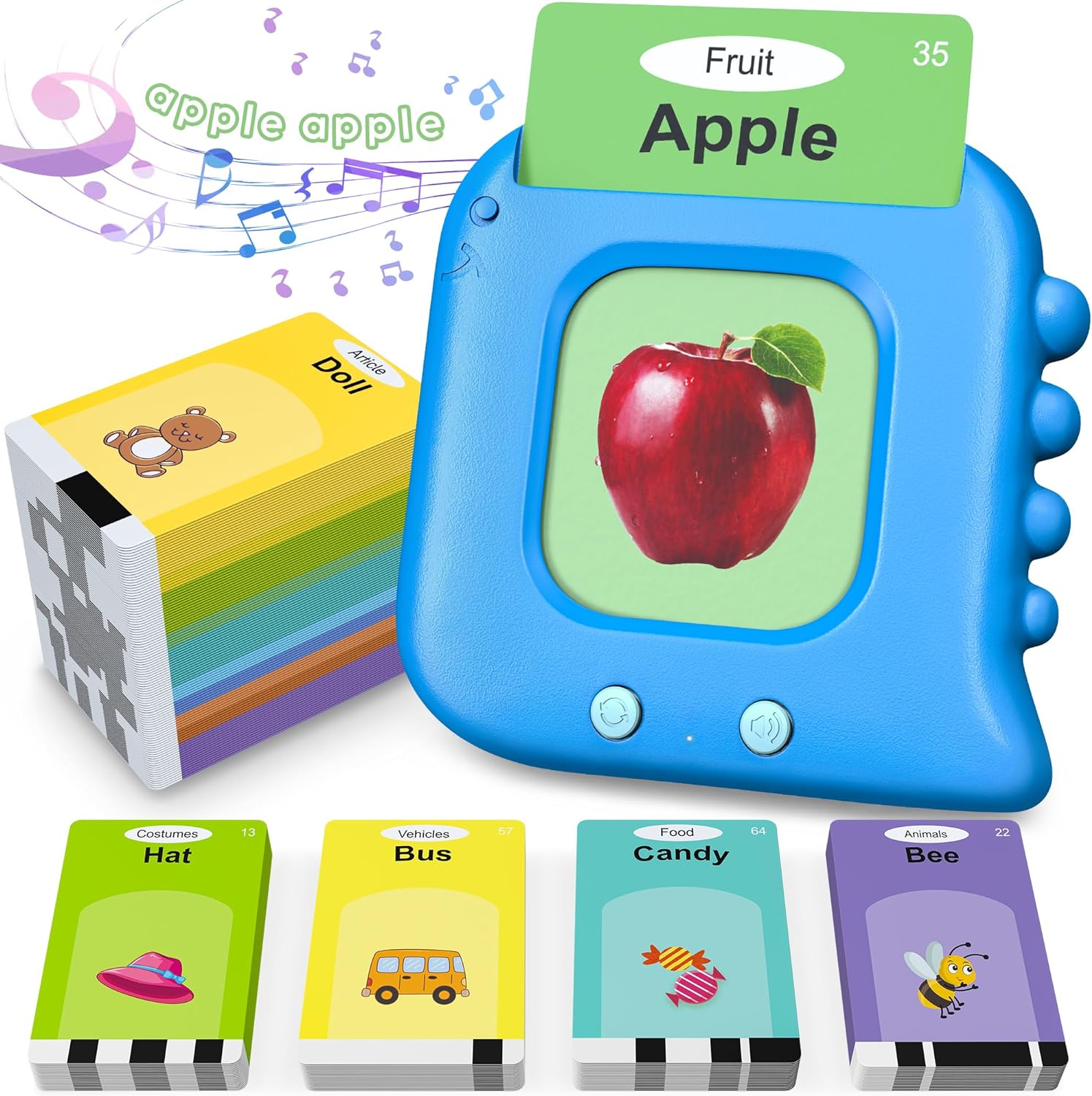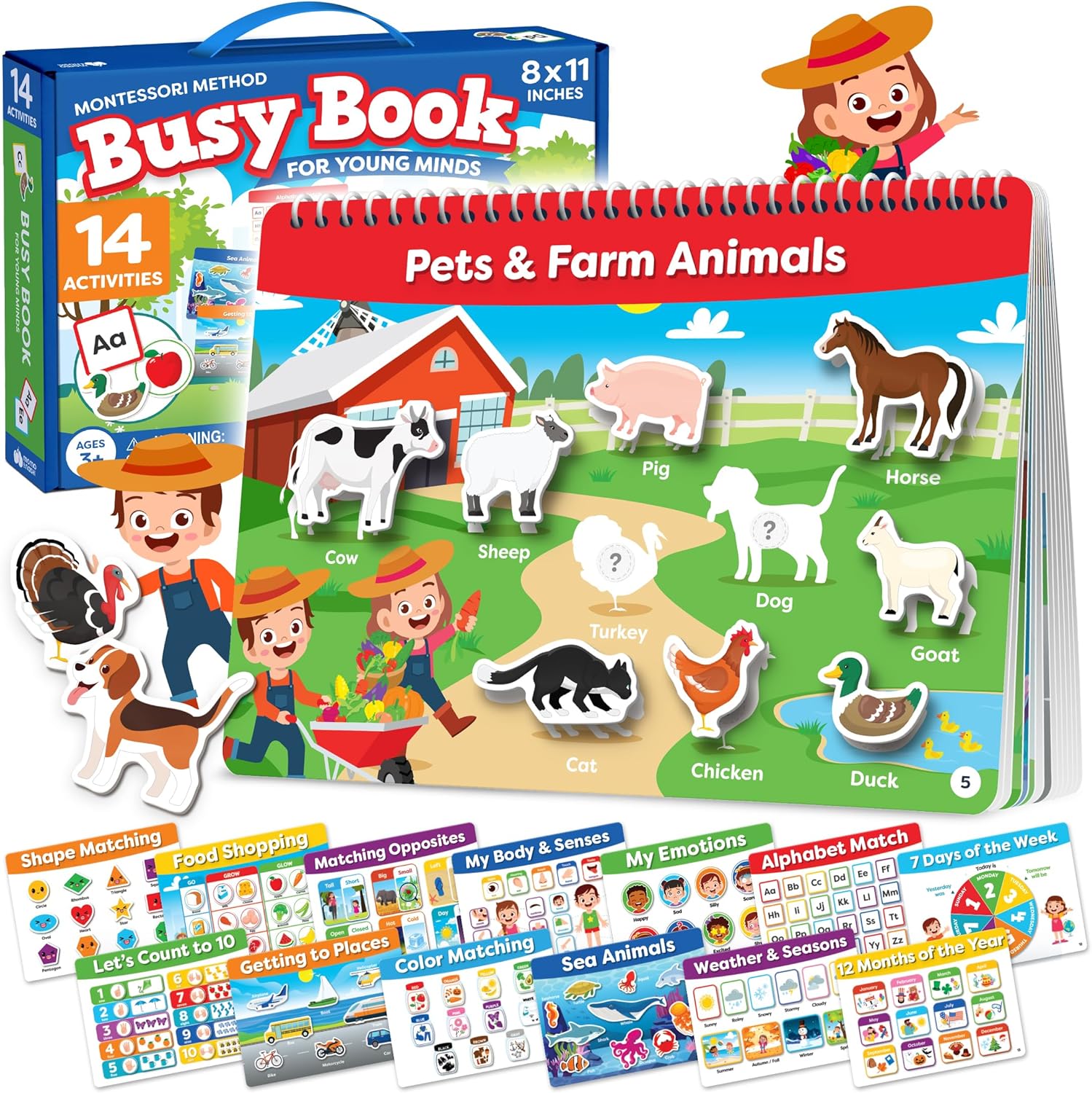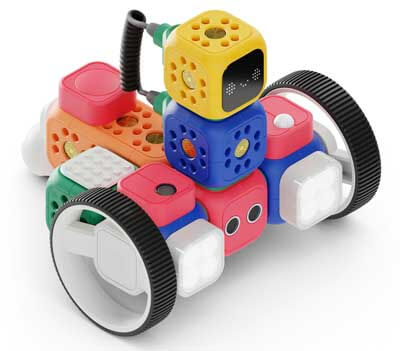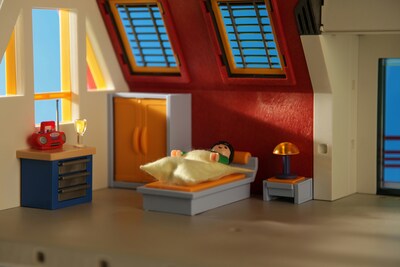Smart Play: Choosing Educational Toys Your Toddler Will Love
Choosing the right educational toys for your toddler can feel overwhelming. This guide unlocks the secrets to selecting age-appropriate, developmentally enriching toys that spark curiosity, creativity, AND FUN! Discover tips for promoting multiple skills, prioritizing safety & durability, and most importantly, fostering a strong parent-child bond through joyful playtime experiences. Let's make learning an adventure!
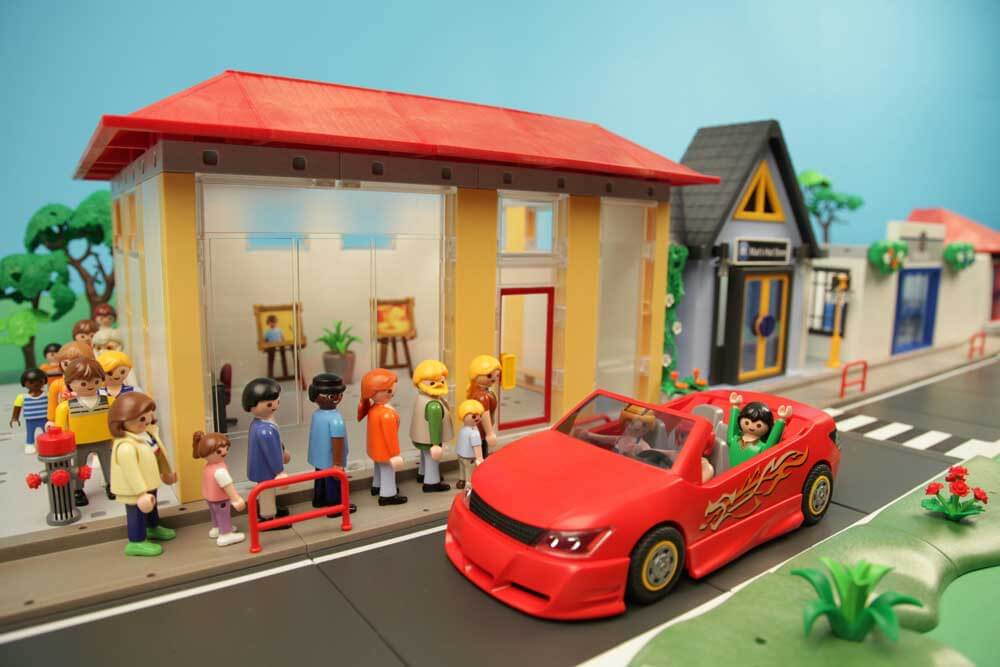
- The Power of Play in Early Learning
- Best Seller Toys
- Top 10 Educational Must-Haves for Toddlers (Age-Specific)
- Most Gifted Toys
- Choosing the Right Educational Toy for Your Toddler
- Conclusion: Play, Learn, and Bond with Your Toddler
The Power of Play in Early Learning
Play is far more than mere entertainment for toddlers; it's the cornerstone of their growth and development. Since the earliest stages of reaching out, grasping, and navigating their surroundings, children are actively absorbing invaluable lessons in physical, cognitive, and social domains. These foundational experiences lay the bedrock for all future learning endeavors and personal growth. Through play, toddlers don't just have fun; they engage in a profound educational journey, exploring, experimenting, and honing skills crucial for their lifelong success.
The Importance of Play for Toddlers' Development
Play serves as the fundamental way toddlers interact with and understand their surroundings. Through engaging in play, toddlers not only develop problem-solving abilities and fine motor skills but also grasp concepts like cause and effect. It's essential for their emotional growth as well, as play provides a means for expressing emotions and coping with them, thereby nurturing social abilities such as sharing, cooperating, and empathizing.
Playing also enables toddlers to creatively test limits and entertain new ideas. This type of exploratory activity is key for cognitive development, enhancing critical thinking and reasoning as toddlers interact with different objects and situations.
Additionally, play significantly boosts language development. As toddlers play with peers or adults, their vocabulary grows, improving their ability to express thoughts and needs. This enhancement in communication is crucial, impacting all facets of their learning and social interactions.
How Educational Toys Enhance Learning
Educational toys are key in enhancing the developmental benefits that play offers. These toys are designed with toddler developmental milestones in mind, promoting the enhancement of specific skills. For example, building blocks aid in developing spatial reasoning and motor skills, while puzzles enhance problem-solving abilities and hand-eye coordination.
Toys that include elements such as colors, numbers, and letters also introduce essential literacy and numeracy skills, establishing an early academic base. Moreover, toys that involve tasks like sorting shapes or assembling components help improve fine motor skills and overall coordination.
Interactive toys that react to a child's actions or basic musical instruments can greatly boost auditory and sensory development. Furthermore, engaging with these educational toys typically encourages toddlers to make choices and utilize their imaginations, promoting creativity and independence.
Educational toys are more than mere entertainment; they are potent enhancements to the inherent joy that toddlers find in play. These toys, specifically designed for fun and educational engagement, go beyond amusement to support toddlers' natural learning trajectories during their critical formative years. By selecting stimulating and age-appropriate educational toys, we can make playtime profoundly enriching, helping toddlers explore and grow. As we examine essential educational toys for toddlers, each selected toy demonstrates its contribution to a toddler's comprehensive development, ensuring that their playtime is as beneficial as it is enjoyable.
Best Seller Toys
Discover the top-rated toys that engage young minds and offer endless hours of educational fun.
Related Article: 40 Top Rated Toys of the Year: Best Sellers and Favorites
Top 10 Educational Must-Haves for Toddlers (Age-Specific)
2-3 Years Old:
Category 1: Sensory and Fine Motor Skills
At the ages of 2 to 3, toddlers are refining their motor skills and sensory perceptions. Toys that stimulate these areas are crucial for their development. Sensory and fine motor skills toys like stacking cups and textured balls offer a hands-on experience that helps toddlers enhance their tactile and problem-solving skills.
As toddlers engage with these toys, they not only enjoy the tactile experience but also develop a sense of mastery over their surroundings. This enhanced confidence fosters cognitive growth and lays the groundwork for tackling increasingly complex challenges as they mature. Thus, introducing toys such as stacking cups and textured balls into a toddler's playtime isn't solely about enjoyment; it's about nurturing skills that will benefit them for years to come.
Stacking Cups: These basic yet captivating toys serve as a gateway for toddlers to grasp concepts like size, color, and order. As they stack the cups, toddlers refine their hand-eye coordination and begin to comprehend differences in size. The physical act of stacking—grasping, balancing, and arranging—also aids in honing their fine motor skills. Knocking down the tower they've built introduces them to cause-and-effect dynamics, adding depth to their play experience.
Textured Balls: Offering a range of textures, these balls provide toddlers with invaluable tactile stimulation essential for their sensory development. Interacting with these balls helps toddlers enhance both their gross and fine motor skills through activities such as rolling, tossing, and catching. Moreover, the diverse surfaces of the balls make sensory exploration engaging and educational, enriching toddlers' sensory awareness as they play.
Sorting toys: Shape sorters, pegboards, and nesting toys all foster color and shape recognition while enhancing fine motor skills and hand-eye coordination. Opt for sorters with varying levels of difficulty to keep your toddler engaged and challenged.
Sensory Play Bins: Fill a bin with dry beans, rice, or water beads for an immersive sensory adventure for toddlers. They can engage in texture exploration, refine scooping and pouring skills using cups and spoons, and embark on treasure hunts by concealing small toys within.
Finger Painting Fun: With safe, non-toxic finger paints, toddlers can unleash their creativity and refine fine motor skills through tactile exploration and manipulation. Finger painting not only provides a sensory-rich experience but also encourages artistic expression.
Category 2: Building and Creativity
Toddlers aged 2 to 3 are at a pivotal developmental stage, eagerly delving into their burgeoning creativity and grasping the nuances of spatial relationships. Toys that beckon exploration and innovation play a crucial role in nurturing these faculties, setting the stage for future problem-solving prowess and artistic flair.
Large building blocks: These oversized blocks are tailor-made for tiny hands, inviting toddlers into a world of stacking, balancing, and constructing rudimentary edifices. Manipulating these blocks hones their hand-eye coordination, heightens spatial awareness, and introduces rudimentary engineering principles. Through trial and error with diverse arrangements, they glean insights into stability and equilibrium, laying a sturdy groundwork for more intricate building endeavors down the road.
Play Dough: A versatile muse for young minds, play dough ignites the flames of creativity and invites boundless imagination. With play dough, toddlers squish, mold, roll, and sculpt to their heart's content, exploring an array of textures and forms. This tactile odyssey not only enriches sensory perception but also fortifies fine motor skills as they deftly mold the dough with nimble fingers. Moreover, play dough play fosters self-expression and narrative crafting as toddlers fashion their own sculptures and vignettes.
Nesting and Stacking Delights: Available in a range of shapes and sizes, from nesting cups to vibrant rings, these toys foster sorting by size, color recognition, and hand-eye coordination. Some nesting toys even incorporate sounds or textures, enhancing sensory exploration.
Engaging Activity Cubes: Featuring multiple sides with different textures, doors to open and close, and shapes to sort, these cubes offer a plethora of activities in one toy. They stimulate visual and tactile senses while promoting fine motor skills development.
Creative Tools (Crayons, Markers): While finger painting offers a sensory-rich experience, introducing crayons and markers allows toddlers to delve into color recognition and initial drawing skills. Opt for large, easy-grip crayons tailored for little hands.
3-4 Years Old:
Category 3: Language and Communication
For toddlers aged 3 to 4 years, developing language and communication skills is crucial as they gear up for structured educational settings like preschool. Toys designed to bolster these skills can greatly enhance their future capabilities in communication, as well as in reading and writing.
Matching Games: These are excellent tools for aiding language development, often featuring combinations of pictures and words that children need to pair together. Playing matching games introduces toddlers to new vocabulary by associating words with images, helping them identify and name various objects, actions, and ideas. This activity also enhances cognitive skills such as memory and concentration, which are essential for learning language. Games that challenge toddlers to connect a picture with a corresponding word promote word recognition and phonetic skills, integral to language mastery.
Alphabet Blocks: A perennial favorite, alphabet blocks serve multiple educational functions. While arranging and stacking these blocks, toddlers not only develop fine motor skills and hand-eye coordination, but they also become acquainted with the letters of the alphabet. This early exposure is crucial for setting the stage for reading and spelling. Playing with these blocks often leads toddlers to form simple words, furthering their understanding of language structure. Moreover, these blocks typically feature images linked to each letter, helping toddlers connect words to relevant pictures and thus building their vocabulary.
Board Books: Featuring sturdy pages and vibrant illustrations, board books are ideal for introducing new vocabulary and nurturing a passion for reading. Opt for interactive options with flaps to uncover, textures to touch, or repetitive stories for toddlers to join in recitation.
Dolls and Stuffed Companions: Engaging with dolls and stuffed animals aids in the development of toddlers' social and emotional skills. Through imaginative play, they can enact real-life situations, cultivate empathy and nurturing tendencies, and weave intricate narratives.
Musical Instruments: From shakers and drums to tambourines and basic xylophones, musical instruments introduce toddlers to the enchanting realm of music. Through exploration of rhythm and sound, they refine hand-eye coordination and partake in simple sing-alongs, fostering language development.
Category 4: Imaginative Play
As toddlers grow into the preschool age, imaginative or pretend play becomes an essential aspect of their development. This form of play not only nurtures creativity and storytelling abilities but also boosts empathy, problem-solving capabilities, and social skills. Toys that support imaginative play, such as dress-up clothes and play food, are crucial during this stage of development.
Dress-Up Clothes: Engaging in dress-up play transcends simple amusement; it is a critical exercise in self-expression and role-playing. When toddlers don costumes, whether they're embodying a firefighter, doctor, or fairy, they immerse themselves in various roles and scenarios. This type of play deepens their understanding of different social roles and contexts, fostering empathy and social awareness. Dress-up also encourages children to explore various problem-solving strategies, enhancing their quick thinking and ability to handle diverse social situations.
Play Food: Ditch the stereotypes about playtime snacks! Play food is a treasure trove for little imaginations. From mimicking grown-up meals to practicing social skills by "serving" tea parties, these toys fuel vocabulary development, introduce basic math concepts through sorting and sharing, and nurture creativity through endless scenarios.
Puppetry and Finger Fun: Harnessing the power of storytelling, puppets offer toddlers a creative outlet to express themselves and hone their narrative abilities. Finger puppets, especially, inject excitement into make-believe adventures, seamlessly integrating into pretend scenarios. Puppet theaters carve out a dedicated stage for puppet performances, nurturing creativity and fostering interaction with an eager audience.
Artistic Endeavors (Construction Paper, Scissors, Glue): Beyond crayons and markers, construction paper, child-friendly scissors, and glue empower toddlers to fashion intricate collages and artwork. These materials ignite creativity, nurture fine motor skills, and cultivate problem-solving abilities as little hands cut, paste, and shape their imaginative visions.
Dramatic Play Props: Toy microphones, pretend telephones, cash registers, or doctor's kits infuse realism into pretend play escapades. These accessories ignite imaginative tales, promote social engagement and role-playing, and serve as educational tools to introduce concepts like commerce or medical instruments.
Most Gifted Toys
Explore the most popular toys that make perfect gifts, bringing joy and developmental benefits to children.
Related Article: 30 Must-Have Choice Toys: Top Picks for Kids
Choosing the Right Educational Toy for Your Toddler
Consider Your Child's Age and Interests
When selecting educational toys for toddlers, finding the right fit for your child is crucial. The best toys are not only fun and engaging but also tailored to suit your child's specific age and interests. Here's why these factors are so important:
Developmental Suitability: The abilities of a two-year-old differ significantly from those of a four-year-old. Toys that are overly complex may overwhelm younger toddlers, while overly simplistic toys might not stimulate older children enough. Choosing a toy that aligns with your child’s developmental level ensures they can understand its functions and enjoy playing with it.
Age Guidelines: Toys usually come with recommended age ranges, which are important to consider. These guidelines are based on the toy's complexity, safety features, and the developmental milestones it aims to address. For toddlers, it's crucial to select toys that are appropriate for their current developmental stage yet still offer some room to grow into. A toy that is too challenging can lead to frustration, while one that is too basic may not captivate their interest or provide adequate stimulation.
Look for toys that promote multiple developmental skills.
Choosing educational toys for toddlers can feel overwhelming. But here's the secret: the best toys aren't just fun, they're developmental powerhouses!
Building a Well-Rounded Mind and Body: Imagine toys that act like tiny gyms for your child's brain. Building blocks, for example, don't just improve hand-eye coordination; they spark creativity and fuel imaginative play. Puzzles and matching games get those cognitive wheels turning, encouraging problem-solving and critical thinking. It's a win-win for development!
Making Playtime Matter: Multi-skill toys turn playtime into a learning extravaganza! They keep your toddler engaged on multiple levels, stimulating their minds, bodies, and social skills. Whether it's constructing a magnificent block tower or having a tea party with their favorite stuffed animals, every activity contributes to a well-rounded development.
Learning Through Play, The Natural Way: The best part? Multi-skill toys create a natural learning environment. Forget flashcards and drills! Through play, children effortlessly absorb new concepts. Building that tower becomes a lesson in colors and shapes, while singing along to musical toys strengthens language skills. It's learning disguised as fun!
So, ditch the single-use gadgets! When browsing the toy store, seek out versatile toys that cater to various developmental needs. By providing toys that promote holistic growth, you're not just making playtime fun, you're laying the foundation for a lifetime of learning and discovery.
Think about durability and safety.
Choosing educational toys for your little explorer is exciting, but don't forget the essentials – safety and durability! Here's why these factors matter:
Safety First, Always: Your top priority is your child's well-being. Seek out toys made with non-toxic materials that are designed for your toddler's age group. Avoid small parts that could pose a choking hazard, and opt for smooth edges and rounded corners to minimize bumps and scrapes.
Built to Last the Adventures: Toddlers are champions of enthusiastic play, and their toys need to be able to keep up! Choose high-quality materials that can withstand frequent use and boundless creativity. Flimsy toys can break easily, leading to frustration and potential safety concerns. Look for well-reviewed options with warranties for added peace of mind.
Think of a safe and durable toy as an investment in your child's playtime. By prioritizing these factors alongside developmental benefits and your child's interests, you'll find the perfect educational companions that fuel learning and fun for years to come!
Conclusion: Play, Learn, and Bond with Your Toddler
We've explored the wonderful world of educational toys for toddlers, and one thing is crystal clear: playtime isn't just fun, it's fundamental to their growth! By choosing toys that match your little one's age, interests, and developmental needs, you're opening the door to a world of enriching experiences that get their minds, bodies, and imaginations buzzing.
Remember, age and interests are key! Opt for toys that pique their curiosity and cater to their current stage. Look for options that nurture a variety of skills, from building block brainiacs to social butterflies and future Picassos. A well-rounded approach to learning is the way to go!
Durability and safety are playtime must-haves. Safe and sturdy toys give your toddler the freedom to explore and experiment without worry, fostering a sense of confidence and uninterrupted discovery. Think of it as an investment in their well-being and learning potential.
But here's the secret ingredient: you! While the toys provide the spark, it's the experiences and connections you create together that truly matter. Get down on their level, build a block tower together, and let your imagination run wild. Play-based learning thrives on your active participation, and the memories you create will be as cherished as the developmental benefits.
So, embrace the power of playtime! Choose toys that spark curiosity, fuel creativity, and most importantly, bring laughter and joy to your adventures together. Through play, learn, and bond with your toddler, laying the foundation for a future filled with exploration, discovery, and endless love. After all, you're their greatest teacher and playmate – have fun with it!
Written by: Administrator
Published on:
Last updated on:
You May Also Like:
Post a Comment
Join the conversation and share your thoughts on this article. Your comments add depth and perspective to our content, fostering a rich exchange of ideas.
